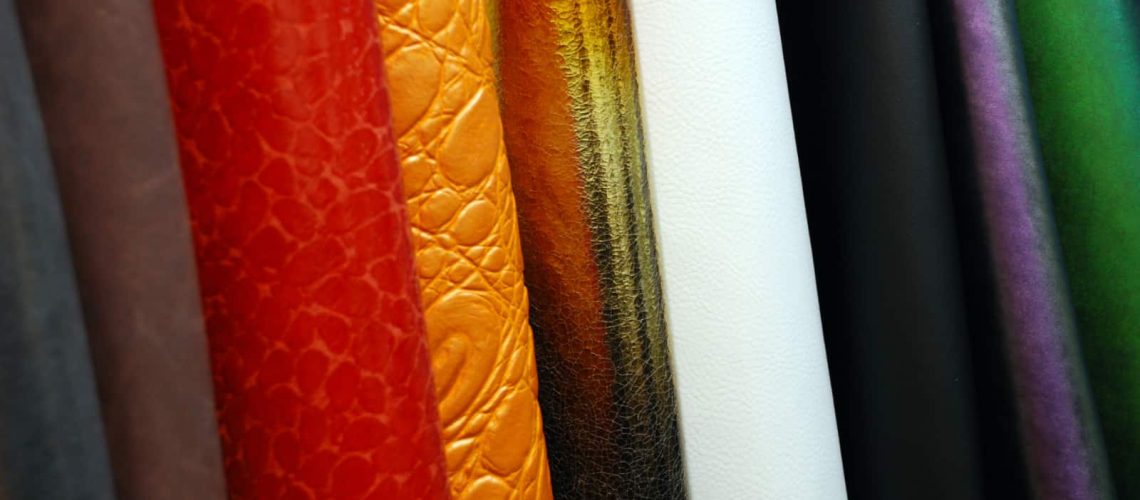Also known as faux leather, vinyl is the most commonly used leather substitute. Vinyl has been used in a wide variety of industries. You must have heard of the old vinyl records, the trendy vinyl flooring, and vinyl upholstery.
One everyday use of vinyl is as a substitute for leather. It can be made to look exactly like leather. What is vinyl leather, and what more should you know about this fabric? Here is a comprehensive look at this topic.
The Story behind Vinyl Leather
Vinyl leather is so named by shortening the name of its initial product, the polyvinylchloride. This is a synthetic plastic product that is made from petroleum products. Vinyl leather is also so named because of the many similarities it has to genuine leather. They are both:
- Soft
- Glossy
- Have high heat retention
- Have low stretchability
- Easy to clean
Watch this video for a step-by-step guide on how to clean your vinyl car seats properly.
The History of Faux Leather
Faux leather was first made as a product called Presstoff in Germany. It was made during the world war when leather fabric was highly rationed. In 1920, the U.S Rubber Company invented the Naugahyde. This was used in making handbags and later applied in other industries. Since then, there have been many synthetic leather fabrics available in the world.
The Making of Faux Leather
Three simple steps are involved in the making of faux leather. The base material used may be cotton or polyester, but it needs to be porous in nature. PVC is then bound to this base fabric, and the resulting vinyl leather fabric can be cut into desired sizes and shapes.
Lubricants, stabilizers, and plasticizers are used in the binding process. These increase flexibility, durability, and softness, respectively. The final product is a fabric that, at first glance, looks exactly like leather.
Faux Leather vs. Real Leather
Faux leather has a uniform grain formation compared to genuine leather, which may differ in grain flow. Remember, natural leather is made from animal skin treated with dyes to become a soft and long-lasting fabric.
While some people argue that genuine leather is better than vinyl, this is not always true. Vinyl has its advantages that leather cannot stand up to.
Environmental Impact
One of the most significant downsides of real leather is that it requires an animal to die to obtain the fabric. This has seen many activists go against this fabric for a long time.
Synthetic leather quickly solves this problem. It is made industrially and does not need any animals to die. However, the plastic used to make it is not biodegradable, which has seen many nature enthusiasts boycott its use. To address this, industries are now replacing PVC in synthetic leather with biodegradable materials.
Wear and Tear Over Time
Genuine leather is definitely tougher than vinyl leather. Natural leather will also serve you for a longer time. This fabric is puncture and tear-resistant and rarely gets torn. However, it is not resistant to cuts. Both leather and faux can be cut. Faux leather is strong and will last a long time (though not as long as leather). It will serve you longer than most other fabrics will.
Wear and tear in vinyl and real leather needs to be repaired as soon it is noted. With frequent repairs, you can be sure that either fabric will serve you for a long time. For the best vinyl leather repair, you need to talk to the leather medic. With various locations all over the country, we will help you repair your leather or vinyl car seats, home furniture, or any other leather products you have.
Why Vinyl Leather?
Leather has many benefits, but it is costly! Vinyl offers you the aesthetics of leather at a lower cost. Faux require minimal maintenance and look great. There are many other benefits of faux leather, so it is a worthy contender compared to genuine leather.
Vinyl has many applications where genuine leather might not be feasible, due to price or exposure. Think boat seats, restaurant booths, RV furniture, and more. Vinyl offers a similar look that is more cost-effective and weather resistant.

